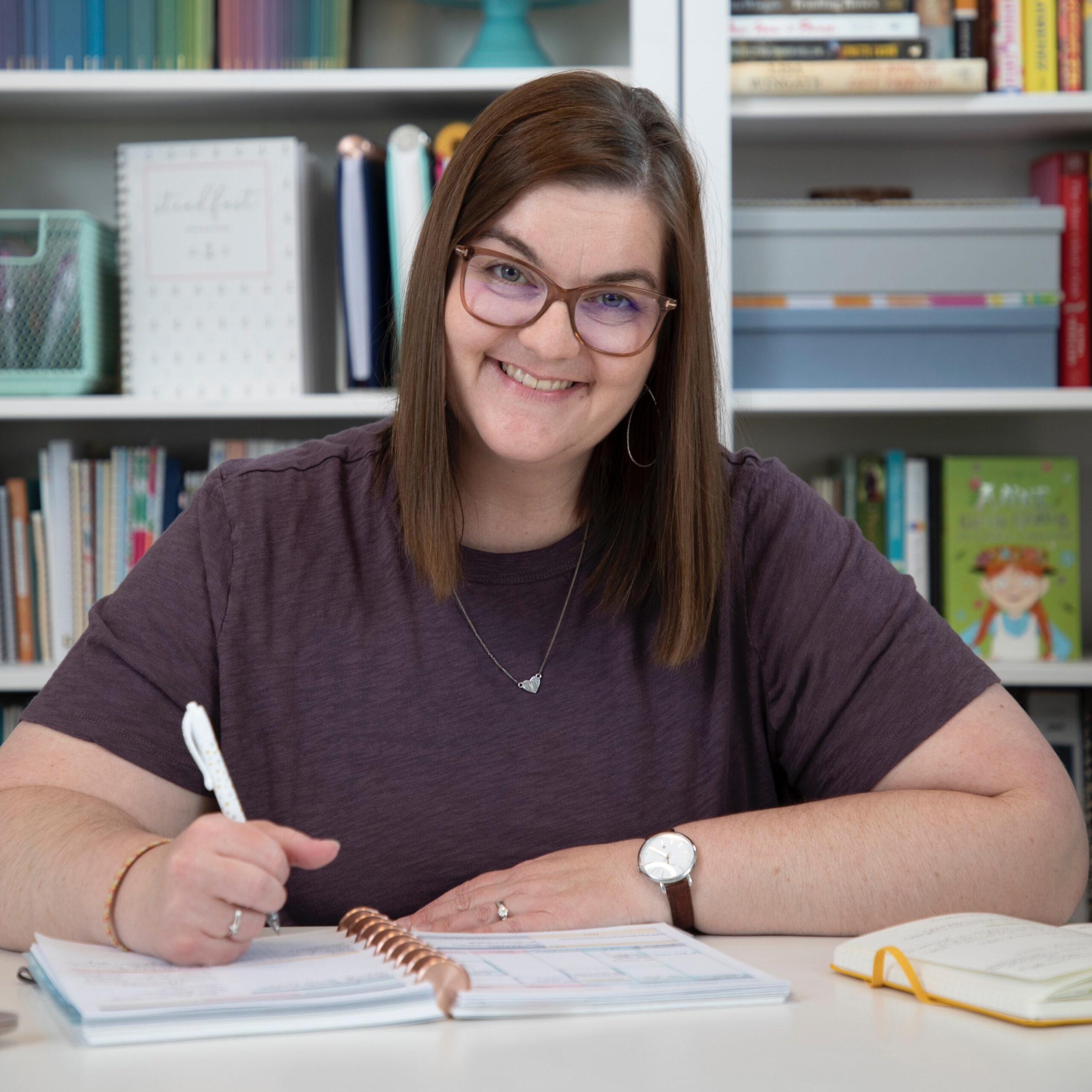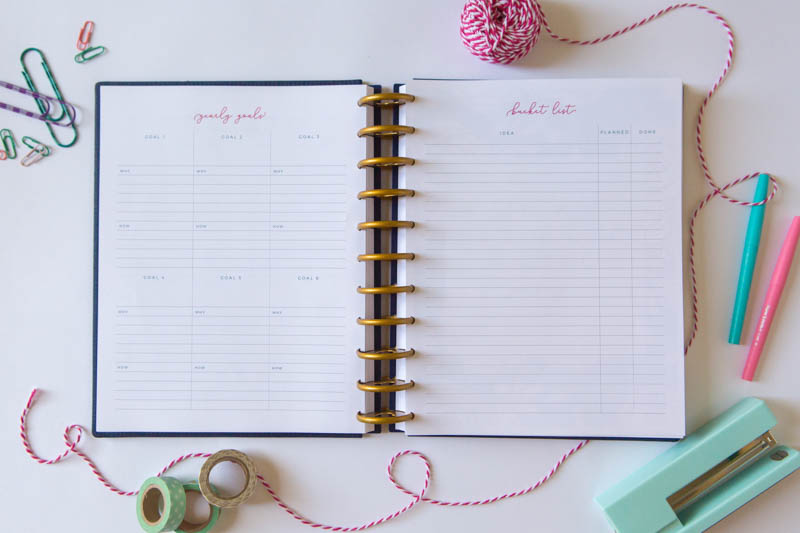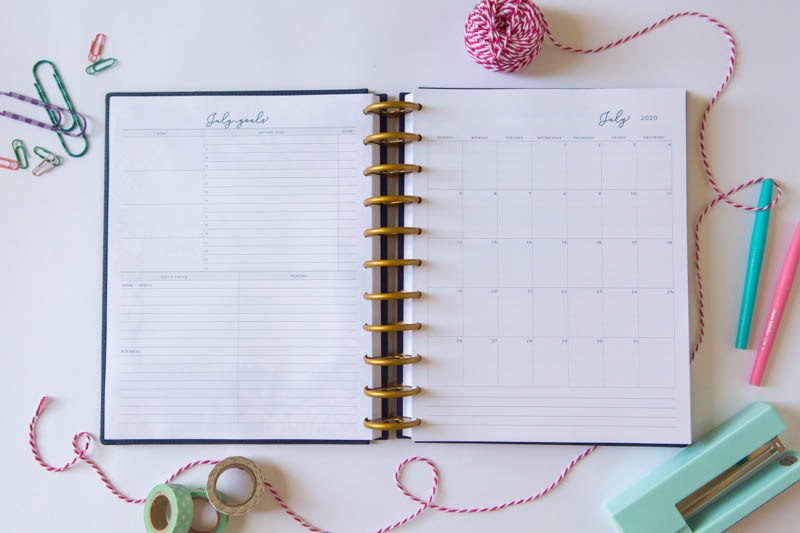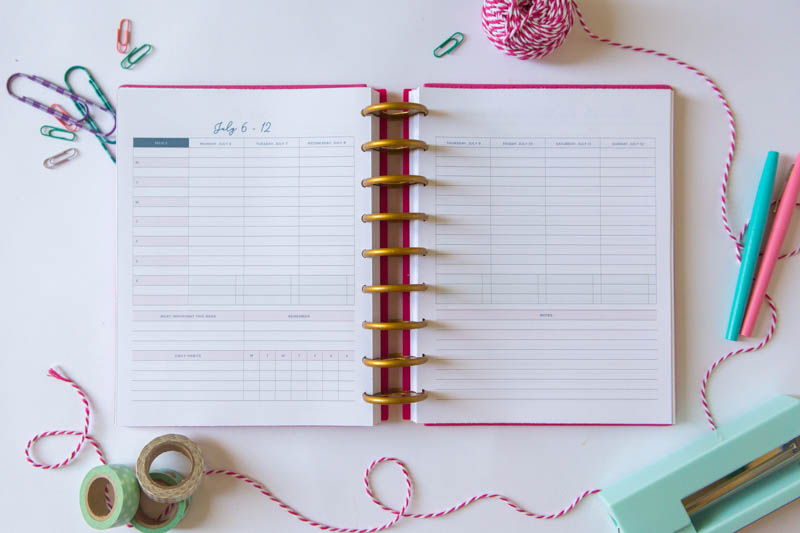How to Make Progress On Your Goals Each Week!
Hey friends! Welcome to our Planning With Purpose series! Each day we’ll talk about a planning strategy that will help you feel more organized and ready to take on the day – even when your days look the same and we’re all stuck at home!
In addition to these daily posts, we’re also hosting a live Facebook chat about these topics each day! Click here to RSVP to today’s live chat – don’t miss it!
And now, onto today’s focus:
How to Make Progress On Your Goals Each Week!
Can I be honest with you? I am really terrible at making progress on long-term goals – ones that take longer than a few hours to complete.
It just does not work for me. I like to attack a task and complete it, beginning to end, and then be done and able to move on. I like being able to check off that box and feel accomplished. I do not love the feeling of small progress – I want things DONE!
Anyone else?
This has proven to be a challenge in goal setting – namely because a lot of the important things in my life really DO have to be completed over long periods of time. Getting healthy. Decluttering my whole house. Packing up aforementioned house to move to a new state. Etc.
So, I’ve had to change the way I look at goals, in order to be okay with making small progress on them. It’s a method that really does work, and also gives me the feeling of accomplishment and finished victory that I need!
I break down long-term goals into smaller, self-contained tasks.
Does that seem simple? It is. Lots of people talk about breaking your big goals down into manageable chunks, that’s true. But the key here is that each chunk really needs to be self-contained. That part makes all the difference!
What is a self-contained task?
A self-contained task is something that has a clear beginning and end, and can be done in one day or less. It does not spill over into the next day. It is a task that you can put on your planner in the morning and check off by the evening. And as part of a bigger group of tasks, it DOES help you move toward your big giant goal.
How do we figure out what these tasks are? Well, again, we have to start with the big picture.
Start with the GIANT Goal
In my yearly prep time each year, I usually choose 4 big goals that I really want to work on. These are the BIG GIANT THINGS that are MOST important to me in the next 12 months. Writing a book. Losing 100 pounds. Reading the whole Bible. Big things.
I start with the giant goal so that I know where I want to end up. What will life look like if I’m able to accomplish this by December 31st? WHY is this important to me? I start here, because this is what gives me the motivation to keep going all year long.
Break it down.
After that’s done, and I know where I want to go, I figure out how I’m going to get there by BREAKING IT DOWN.
First, I take that goal and break it down by the month. What do I need to do each month in order to get to my destination by the end of the year? Once I do this part, I can look at my monthly plan and assess whether or not it’s even realistic. Sometimes, it’s not, and I have to go back and readjust the giant goal. THAT IS OKAY, because as I’m doing this work of planning, I am able to better see if this is something I can actually do, and adjust my expectations and plans if they were off.
Next, I focus on each month and zoom in a bit. What is the big goal for that month, and how can I break it down even more? What one thing can I accomplish each week? Remember – each smaller chunk MUST be able to be self-contained, and check-off-able! That’s not a word, but it really should be.
Finally, I take a look at what needs to get done that week and break it down by the day. Small – tiny at this point – tasks that I can write down in the morning and check off by bedtime. Manageable tasks that allow me to make progress without feeling like it’s dragging on. Tasks that have a clear beginning and end.
By doing this – breaking the GIANT goal down into tiny ones, I’m able to actually make tiny progress on a daily basis, and still check those big things off my list!
How this looks in real life. (In 2 examples)
Big Giant Goal #1: Write a book
- Step 1 // Break it down by month: If a typical book is about 60,000 words, this means I have to write 5,000 words a month.
- Step 2 // Break it down by the week: If I have to write 5000 words a month, this means I need to write 1250 words a week.
- Step 3 // Break it down by day: If I have to write 715 words a week, I need to write 179 words a day if I’m writing 7 days a week, or 250 words a day if I’m writing 5 days a week.
- Assessment // This is completely doable. 250 words a day at most?! I can do that! Now of course, this doesn’t take into account time for proofing, editing, rewriting, etc., but those were not the goal. The goal was to write a book by the end of the year, and with this plan of tiny tasks, I can see how this could actually happen this year. And that makes me motivated!
Big Giant Goal #1: Lose 100 pounds
- Step 1 // Break it down by month: To lose 100 pounds in a year, I’ll need to lose 8.3 pounds a month.
- Step 2 // Break it down by the week: To lose 8.3 pounds a month, I’ll need to lose 2.075 pounds a week.
- Step 3 // Break it down by day: To lose 2.075 pounds a week, I’ll need to track my food and cut my calories by 1000 calories per day, to create a deficit of 7000 calories per week, which equals losing two pounds.
- Assessment // This is not realistic for me – to cut 1000 calories a day! So, back to the drawing board. Maybe I adjust that goal to lose 50 pounds in a year, which translates daily to tracking my food and cutting 500 calories per day. That I can do. So, I’ve adjusted my goal to something I can actually accomplish. Will it likely take me longer to get to my ultimate goal? Sure. But accomplishing manageable tasks along the way will really help me sustain my motivation, and ultimately get me where I want to go!
See how that works? When we look at the tiny tasks instead of the big ones, we can actually see if what we’re trying to do is realistic. And having a realistic plan makes ALL the difference, because if it’s sustainable, we can keep going. If it’s not, we can’t! And when we fail on our daily tasks time and time again (because they weren’t realistic in the first place), we won’t have the endurance we need to keep going until we reach our goal. The key is to adjust those daily tasks to a manageable, self-contained size, and then be flexible with our GIANT goal, based on what we know we can do each day.
Tools to help
This is the goal setting & achieving process I use, and I do all of this inside my S.O.S. Planner. I set my yearly goals at the beginning of the year, then break them down by the month on my monthly goals pages, and then I break that monthly goal down into 4 action steps, which I write out on those monthly goal pages, too. Each action step is given to one week of the month, and from there I break it down into how I’m going to get that done each DAY. I then write those tiny tasks in the daily section of my planner.
From big picture to tiny task, we really can set goals that are realistic, and actually achieve them!
Looking for a planner that will help you break down your goals? Don’t miss our brand new 2020-2021 S.O.S. Planners!
We’re still in the middle of launch week, which means right now you can get an incredible discount AND over $55 in bonuses with your planner!
CLICK HERE TO SEE OUR NEW PLANNERS!
How about you? Does this goal process make sense to you, or do you prefer to handle your goals a different way?

Kayse Pratt serves Christian women as a writer + designer, creating home + life management resources that help those women plan their days around what matters most. She’s created the most unique planner on the market, helped over 400 women create custom home management plans, and works with hundreds of women each month inside her membership, teaching them how to plan their days around what matters most. When she’s not designing printables or writing essays, you’ll find Kayse homeschooling her kids, reading a cheesy novel with a giant cup of tea in hand, or watching an old show from the 90’s with her husband, who is her very best friend.






